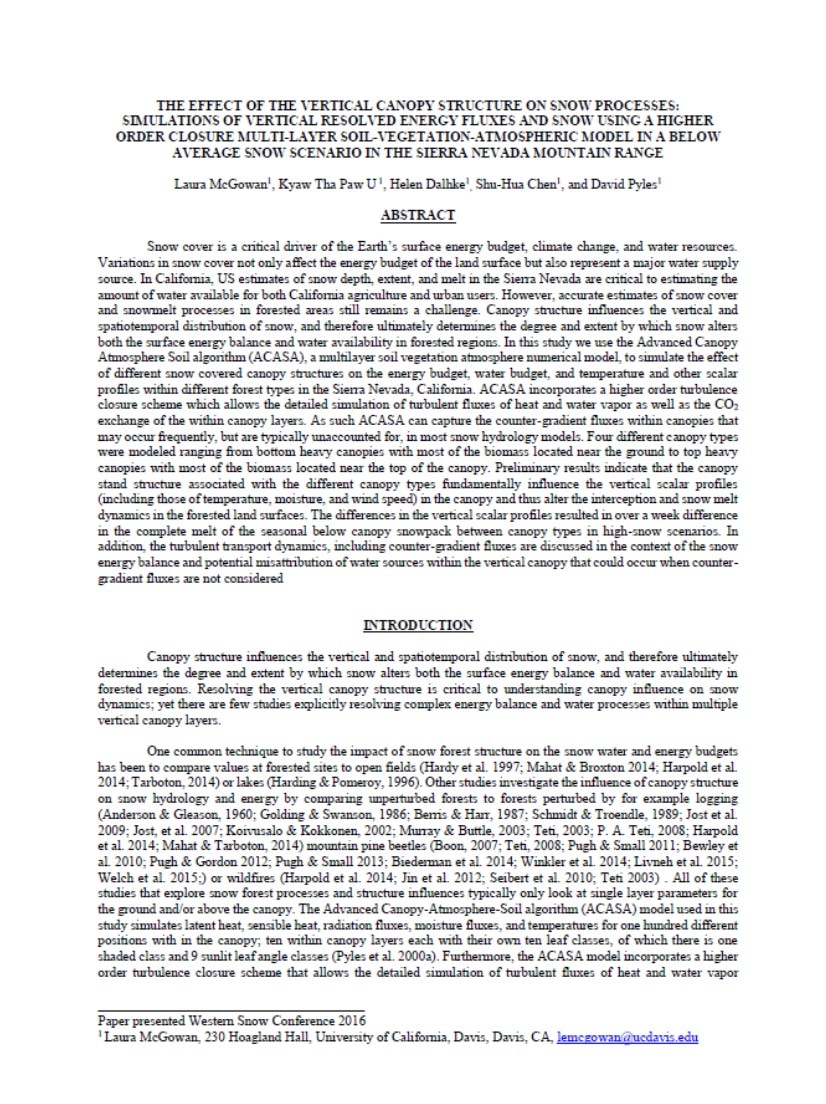Current Research
|
Exploring canopy structure influences the vertical and spatiotemporal distribution of snow,
utilizing the Advanced Canopy-Atmosphere-Soil algorithm (ACASA), a multi-layer soil-vegetation-atmosphere numerical model. Simulate the effect of different snow-covered canopy structures on the energy budget, and temperature and other scalar profiles within different forest types in the Sierra Nevada, California. |
|
